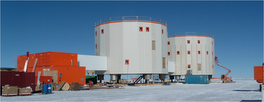Great Pendulum or "19-Tons"
In the last Sunday seismometer post on
the Vicentini seismograph, we mentioned that in order for a seismograph to overcome the friction caused by a purely mechanical recording system, it needs a large mass.
The Vicentini instruments actually have the smallest masses (100 kg for the horizontal and 50 kg for the vertical) of the mechanically recorded seismographs we have described so far. The
Mainka instrument has a 450 kg mass, the
Wiechert horizontal instrument has a 1-ton (1000 kg) mass, and the
Wiechert vertical instrument has a mass of 1.2 tons.
The largest mass of all the seismometers in the Strasbourg museum is that of the Great Pendulum: an impressive 19 tons (that is 19 000 kg)!

Its construction was started before the First World War (1910), when the Strasbourg Observatory was part of Germany. The idea was to build an instrument that would be similar to one installed in Göttingen, a 17-Ton seismograph. After the war, Strasbourg became French, and it was the French director of the Observatory, Edmond Rothé, who completed the construction of the Great Pendulum in 1925.

The mass itself is essentially made up of scrap metal from the War, including 12 tons of axles from military trucks and 2 tons of weapon parts.
The 19-Ton has a natural period of 2 seconds, and records both the horizontal directions of motion, like the
Wiechert horizontal instrument. Also like the Wiechert, its motion is damped by air pistons.

The smoked paper recording system was abandoned in 1970 in favor of galvanometric recording. In 1987 the recording system was changed once again to digital recording using displacement detectors.
The 19-Ton instrument is still in working order today, and is a great favorite with visitors to the Strasbourg Seismology Museum.

















































